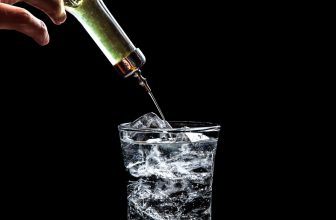
Since we last chronicled the new vocabulary of wine, a half-decade ago, wine culture has drastically changed. The way we shop for bottles has been reimagined, and how much we drink (if at all) has been reconsidered. Natural wine became entangled with the internet, so much so that posting about it is now a viable career path for a duo of wine-tasting influencer twins, a shitposting wine critic and several online personalities dedicated to making wine more accessible, or at least more fun. The scene got irony-pilled—cue the “Natural Wine Sucks” T-shirts of just a few years ago—and has now circled back around to a full, unironic embrace of the things many once stood resolutely against, like establishment red wines, while pét-nat and piquette became passé. Are you following?
Experts Featured
Colleen Allerton-Hollier is the director of education and events at Leon & Son in Brooklyn, New York.
Nader Asgari-Tari is the director of wine at Boston’s BCB3 restaurant group.
Marie Cheslik is the creator of Slik Wines and author of the forthcoming How To Read A Wine Label.
David Cortes is the lead sommelier at Majordomo in Los Angeles.
Kayleigh Fair is the assistant general manager at June’s All Day in Austin, Texas.
Andrew Fortgang is the co-owner of Le Pigeon and Canard in Portland, Oregon.
Yann Janvier is the sommelier at Terra Restaurant in Paris.
Ren Peir is the wine director in residence at Nin Hao in Brooklyn.
William Simons is the director of operations and wine director at Albi in Washington, D.C.
Eitan Spivak is the lead sommelier at Kabawa and Bar Kabawa in New York.
If you’re confused, you’re not alone. The wine world is fractured. For every person in a wine meme page’s comments saying natty is dead, there is a blissfully offline wine enthusiast with no idea what you’re talking about. And, for the most part, we can’t even seem to agree on what the relevant terms mean.
“I am someone who knows how to do the wine talk, but also knows how ineffective it can be,” says Marie Cheslik, a former wine director and the creator of Slik Wines, a platform for wine education. “People have a hard time describing wine naturally… They say, ‘I want something that’s dry’, or ‘fruity,’ but I don’t even think we’re all on the same page, as a society, about what that means. It is almost too subjective.” A universal wine language does not entirely exist.
So how do you talk about wine, which has only gotten more expansive and convoluted in the past five years, in a meaningful way? Trite as it may sound, you have to take it offline, and you have to taste—and talk about it—with others as much as you can.
“I think it’s important for people to, at the risk of sounding so corny, be curious,” says Colleen Allerton-Hollier, director of education and events at Leon & Son, a wine shop in Brooklyn, New York. “You won’t know what to call something unless you’ve experienced it.”
In the meantime, here’s your cheat sheet to the wine words to know right now.
Aeration: Literally adding oxygen (via air) to wine. For centuries, people have come up with all manner of gadgets and hacks to aerate their wines. According to Punch contributor Saman Hosseini, it’s “a symptom of early-aughts drinkers’ ceaseless desire for ‘smoothness’” and a way to flex your Sharper Image purchase.
Baby fat: For Nader Asgari-Tari, director of wine at Boston’s BCB3, “baby fat” can be a useful way to describe “the temporary roundness and characteristics associated with younger wines that have lots of flesh and will assuredly lose some of that [texture].” As certain wines, like an albariño, mature, they may lose some of that texture (aka baby fat) and fall more into balance.
Big Red Wine: Bolder, fuller-bodied red wines like Bordeaux and Barolo. As Punch contributor Eliza Dumais reported, Big Reds represent a pendulum swing for the wine world, partly in reaction to the now years-long reign of “chilled reds” like gamay and Beaujolais at natural wine bars and shops everywhere.
Budget banger: A useful term from the retail floor at Leon & Son. “A budget banger, to me, is the best way to communicate to someone that they’re getting a great deal,” says Allerton-Hollier. These wines punch above their weight for their price, like an entry-level wine from “a producer who [also] makes really expensive or allocated wines.”
Clean: Can refer to the flavor and texture of a wine (see also: “Crisp/crispy”), while some, confusingly, use it to describe the way a wine is made—sustainably? naturally? Like the nebulous diet culture phrase “clean eating,” it can be unclear.
Conventional: Generally used to describe the opposite of “natural” wines.
Crisp/crispy: Lately, it seems “crisp” is meant to convey a vibe more than any actual characteristic. “‘Crisp white wines’—I hear that all the time [requested] on the retail floor,” says Allerton-Hollier. “‘Nothing sweet. No Chardonnay.’ It’s like, Aw, man, what if you had something with texture?” As Bustle reported last month, white wines that mostly just taste “cold” “are back” in a “semi-ironic, intentional self-bimbo-ficiation” way. To that I say: What the hell, sure.
Crunchy: This term refers to structure, describing high-acid wines with a brittle characteristic. Though it’s not new, the word is “ascendant” among wine drinkers, but has grown to “become a kind of shibboleth,” says William Simons, wine director at Washington D.C.’s Albi, who feels it may be time to retire the buzzword in favor of clearer descriptions.
Crushable: A bro-y catchall for “easy-drinking” that isn’t just limited to wine, but also beer, seltzer and cocktails. As Punch contributor Danny Chau writes, “Its value lies in its universality.”
Dad Wine: Sarah Morrissey, bar manager of Le Veau d’Or in New York City, puts “Cabs, Bordeaux, merlot, blends… any red that can stand up to bold flavors” in this category. See also: Big Red Wine.
Dry: Technically, lacking residual sugar. In practice, though, retailers and educators say the average wine drinker overrequests “something dry,” without much of an understanding of what they’re actually after. “I would say to them that 90 percent of wines are dry. I’m not talking about residual sugar. I’m talking about … most of the wines you’re going to taste in a tasting are dry,” says Cheslik. “It’s like literal grape juice [as ‘sweet’] versus most wine.”
Dusty: “Whenever I taste Bordeaux, it tastes dusty to me. There is a decrepit aspect to it. I called it ‘library energy’ [in a recent TikTok,]” says Cheslik.
Feminine/masculine: Historically, “feminine” wines are said to be sexy, or, ugh, supple, while “masculine” wines are structured, rich, powerful. These gendered frameworks are widely considered dated, but the ideas behind them persist—you can probably think of “dad” and “mom” wines, some even branded as such.
Funky: A widely (over)used term. It typically refers to a flavor profile—a savory, earthy, sometimes musty quality—but has some detractors. Because it’s characterized by “novel” or “unfamiliar” tastes and aromas, the description inherently involves subjectivity, which means it can be confusing. Wine pros caution against using “funky” as a catchall: “It doesn’t always mean ‘the flavors of an orange or spontaneously fermented wine,’” says Allerton-Hollier.
Glou-glou: Because of the pervasiveness of this term in the past decade, in 2025, it now feels a bit dated. It is, in fact, not new, but from the 1600s. It’s onomatopoeia, the French version of “glug,” and refers to fresh and juicy wines. More recently, however, after lending its name to wine shops, publications and other brands, it’s “become a meta-profile for natural wine overall.”
High-toned: “This tells me that the wine is super bright, acidic and a little austere,” says Ren Peir, wine director in residence at Nin Hao, in Brooklyn, New York.
Jammy: Jammy wines are characterized by ripe (or overripe) fruit flavor. They are often misidentified as “sweet” by the uninitiated, according to David Cortes, lead sommelier at Majordomo, in Los Angeles.
Juice/juicy: “A ‘juicy’ wine creates an unshakable perception of fruit on the palate, aided by a balance of acid and just enough tannins for a touch of textural density akin to, well, juice,” writes Chau.
Linear: Imagine the “line,” here, connecting the first taste of the wine to its finish. A linear wine doesn’t have much differentiation from the beginning to the end.
The Wine Flaw of Our Times
Variably described as tasting like “corn nuts,” “puppy’s breath” and “vomit,” mouse has become a fixture of natural wine culture as pervasive as it is misunderstood.
Lip-smacker: “Think of a light red with slightly unripe fruits, and an acidic backbone,” says Kayleigh Fair, assistant general manager at June’s All Day in Austin, Texas. That’s a lip-smacker. It’s “juicy, but has bite. She leaves you wanting more.”
Minerality: A way to describe flavor (earthiness, saltiness, wet stone notes) or texture (chalkiness). It’s important to note that this is just a tasting term; a wine that tastes like flint or limestone was not necessarily grown in soil with those minerals present.
Mouse/mousy: A particular off-taste in certain bottles, and the wine flaw of our times, according to Punch contributor John McCarroll. Because adding sulfur dioxide, a naturally occurring antimicrobial and preservative, can remove mousiness, some critics have used mousiness to discredit natural winemaking as a whole.
Natural/natty: A contentious description for wines made with minimal intervention. “I wish people would stop using the term ‘natty,’” says Eitan Spivak of New York’s Kabawa. “It sometimes misrepresents the nuanced, thoughtful decisions that winemakers make.” It should be noted that “natural” is a distinction about how a wine is made, not how it’s marketed. (“Natural” ≠ “new age” or “hip.”) “Traditionally made—what we often call ‘natural’—wines have been around for eternity, and for that reason, I don’t think there’s any chance they’re going anywhere,” Alice Feiring, an expert on the subject, recently told Punch.
Parkerization: The sum of impacts caused by Robert Parker, a wine critic described, mostly by boomers, as “the father of wine criticism” and heavily criticized, mostly by younger wine drinkers and those who found his taste globalizing and “soulless.”
Pinard: French slang for “low-quality red wine.” Some consider the word distasteful. “I find the term a bit reductive in relation to the hard work of winegrowers,” says Yann Janvier, sommelier at Terra Restaurant in Paris.
Patio pounder/porch pounder: A wine, often a cold one, that’s ideal for drinking all day, outside. “Easy, stupid—not as in, This wine is dumb, but, as in, you don’t have to think about it,” explains Cheslik. See also: crushable.
Reduction: The phenomenon that happens when wine doesn’t get enough oxygen in the winemaking process, which causes volatile sulfur compounds to present, giving off a smell (think rotten eggs or rubber). “‘Reduction/reductive’ gets used too much,” says Andrew Fortgang, co-owner of Le Pigeon and Canard in Portland, Oregon. “It is mentioned so much by wine pros that I think intermediate wine folks, and guests at restaurants, hear it, don’t know what it is, and play along. I honestly think some people use it interchangeably with minerality.”
Sympathy for the Devil
Robert Parker has long been the wine world’s favorite villain—a critic who used his unprecedented power to flatten wine into an alcoholic, fruity mass of sameness. But “Parkerization” was always much bigger than one man.
So Long to the “Somm”
Both the “sommelier” and its swaggering, scandal-riddled sibling are on the outs. What should wine professionals call themselves?
Reductive winemaking: Reductive winemaking, meanwhile, is the practice of intentionally limiting oxygen—using stainless steel tanks, for example, and fermenting at colder temperatures—in the winemaking process.
Somm: Literally short for “sommelier.” In practice, it has pretty fratty associations; a somm is sort of “an analogue of the bad-boy chef,” as Punch contributor Miguel de Leon puts it. Today, wine pros are adopting new monikers, from purely descriptive (“wine steward”) to cheeky (“curator of vibes”).
Splash: Industry lingo for VIP (aka PX) treatment at bars and restaurants, often a comped glass of sparkling wine to start the meal.
Steely: “When you have a reductive white wine that’s obviously made in stainless steel … it’s very linear, very angular, übercrisp and meant to be drunk young,” says Allerton-Hollier.
Texture/textural: Cortes finds it useful to describe white wines with complexity as “textural.” He says: “The textural component of wine can come from winemaking techniques such as malolactic fermentation or aging wine in oak barrels.”
Tight: Typically referring to younger wines with tannins and acidity. Decanting can “open up” a tight wine.
Wine bar: OK, yeah, you know what a wine bar is. You also probably know the hallmarks of a Cool New Modern Wine Bar (a chic bathroom, DJ nights, a lo-fi Instagram account). But “wine bar” today isn’t just one thing. It, thankfully, no longer just means cheese plates. The wave of wine bars in New York serving food from the city’s Asian diaspora is a good example, as are bars that offer plenty of (good) cocktails and (non-charcuterie plate) food but retain the moniker; Bar Kabawa in New York calls itself a “Daiquiri and wine bar.”
Wine jockey: With more natural wine spaces resembling nightclubs, perhaps wine jockeys—what the roving pop-up Bêvèrãgęš calls its wine experts—will be on the rise, too.










